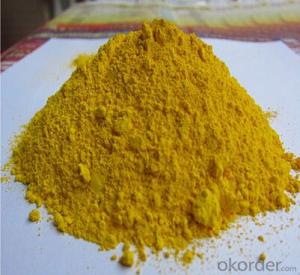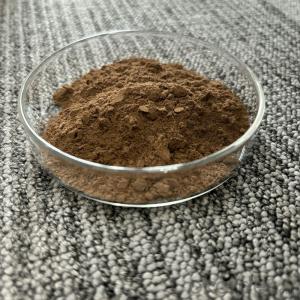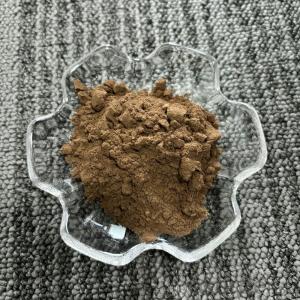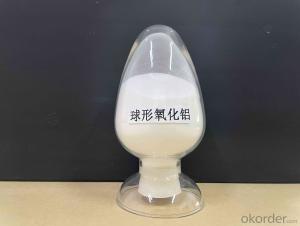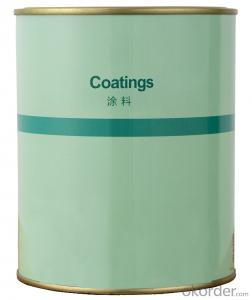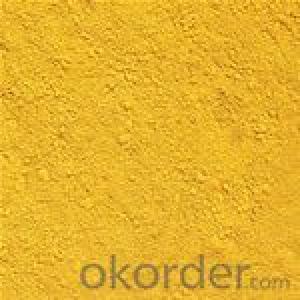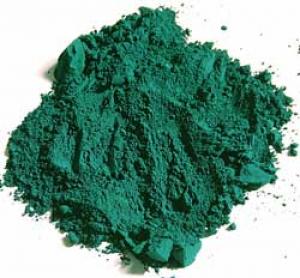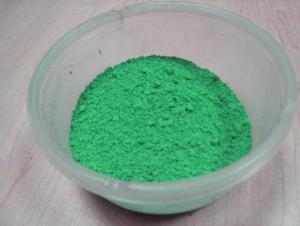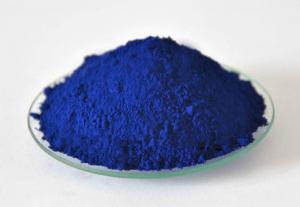Zinc Iron Brown Yellow Pigment Powder Building construction material
- Loading Port:
- Tianjin
- Payment Terms:
- TT OR LC
- Min Order Qty:
- 10 m.t.
- Supply Capability:
- 60000 m.t./month
OKorder Service Pledge
OKorder Financial Service
You Might Also Like
Zinc Iron Brown Yellow Specification:
Zinc iron brown yellow pigment is a kind of yellow color is darker, more used in painting, color masterbatch, plastic and other fields, zinc iron brown yellow compared with ordinary iron yellow, it has higher tinting strength and higher temperature tolerance.
Zinc iron yellow information:
Iron yellow pigment series: Zinc Iron Brown Yellow
Product color: Dark Brown
Pigments index: P.Y. 119
Paint ingredients: Zinc/Fe/O
The level of products: industrial grade
Zinc Iron Yellow Data Sheet:
| Type | Name | Color | Color Atla | Themperaturance tolerance(℃) | Color Index |
| PY-5119 | Zinc Iron Yellow | Yellow, Dark Red Phase | <1000 | P.Y.119 |
| Zinc Iron Yellow | Index | Zinc Iron Yellow | Index |
| Themperaturance Tolerance, ℃ | <1000 | Density, g/cm3 | 5.2 |
| 105℃ Volatile Matter, %(m/m) | ≤0.5 | Moisture,% | ≤0.2 |
| Hydrotrope, %(m/m) | ≤0.5 | Water Suspension PH | 7.0 |
| Others(45um Square hole sieve), %(m/m) | ≤0.1 | Oil Absorption, g/100g | 22 |
Zinc Iron Yellow Character:
Zinc iron yellow yellow pigment is a kind of red phase, compared with the ordinary iron yellow, it has higher tinting strength and higher temperature resistance;
Zinc iron yellow has excellent heat resistance, light resistance, acid resistance, alkali resistance, migration, high tinting strength, easy to disperse;
Zinc iron yellow is widely used in plastic, color masterbatch, coil coating, coating, fluorocarbon coating, and other fields;
Zinc iron Huang Ke used in painting, to draw the traditional Chinese painting or canvas, not easy to fade;
Zinc iron yellow does not contain heavy metals, belongs to the environmental protection paint.
Zinc Iron Yellow Pigment Useage:
Zinc iron yellow is widely used in plastics, masterbatch, coil coating, coating, fluorocarbon coating, and other fields;
Zinc iron yellow used in painting, to draw the traditional Chinese painting or canvas, not easy to fade;
Zinc iron yellow used in papermaking industry.


- Q:What pigments take part in photosynthesis?
- There are three basic classes of pigments. Chlorophylls are greenish pigments which contain a porphyrin ring. This is a stable ring-shaped molecule around which electrons are free to migrate. Because the electrons move freely, the ring has the potential to gain or lose electrons easily, and thus the potential to provide energized electrons to other molecules. This is the fundamental process by which chlorophyll captures the energy of sunlight. There are several kinds of chlorophyll, the most important being chlorophyll a. This is the molecule which makes photosynthesis possible, by passing its energized electrons on to molecules which will manufacture sugars. All plants, algae, and cyanobacteria which photosynthesize contain chlorophyll a. A second kind of chlorophyll is chlorophyll b, which occurs only in green algae and in the plants. A third form of chlorophyll which is common is (not surprisingly) called chlorophyll c, and is found only in the photosynthetic members of the Chromista as well as the dinoflagellates. The differences between the chlorophylls of these major groups was one of the first clues that they were not as closely related as previously thought.....
- Q:Please and thank you, it doesn't say so on the website.
- Mac Pigment Ingredients
- Q:What is a pigment and their function in photosynthesis?
- chlorophyl is the pigment i think. it is in the leaves of plants, that is where the photosynthesis takes place.
- Q:I got this question from my A2 Biology but I can't find the answer. Does anybody know?
- Photosynthesis in plants is dependent upon capturing light energy in the pigment chlorophyll, and in particular chlorophyll a. This chlorophyll resides mostly in the chloroplasts and gives leaves their green color. The range of light absorption in leaves is extended by some accessory pigments such as the carotenoids, but does not cover the entire visible range - that would make the leaves black! Some plants and plantlike organisms have developed other pigments to compensate for low light or poor use of light. Cyanobacteria and red algae have phycocyanin and allophycocyanin as accessory pigments to absorbe orange light. They also have a red pigment called phycoerythrin that absorbs green light and extends the range of photosynthesis. The red pigment lycopene is found in vegetables. Some red algae are in fact nearly black, so that increases their photosynthetic efficiency. Brown algae have the pigment fucoxanthin in addition to chlorophyll to widen their absorption range. These red and brown algae grow to depths around 270 meters where the light is less than 1% of surface light. Chlorophylla-a is the primary pigment for photosynthesis in plants. Its structure is shown at left. It has the composition C55H72O5N4Mg. It exhibits a grass-green visual color and absorption peaks at 430nm and 662nm. It occurs in all photosynthetic organisms except photosynthetic bacteria. Chlorophyll-b has the composition C55H70O6N4Mg, the difference from chlorophyll-a being the replacement of a methyl group with a CHO. It exhibits a blue-green visual color and absorption peaks at 453nm and 642nm. It occurs in all plants, green algae and some prokaryotes. There is usually about half as much chlorophyll-b as the -a variety in plants.
- Q:Many of the microorganisms found on environmental surfaces are pigmented. Of what possible advantage is the pigment?
- Pigments have many advantages for the cell. They can absorb light to be used in photosynthesis. Specific pigments absorb light in a specific range - so the more pigments the more light can be absorbed and used for photosynthesis. Pigments also protect the cells from damage by UV radiation. More recently it has been suggested that some pigments inhibit the growth of some microorganisms.
- Q:i love makeup so mucch im like addicted...lol but the only thing is that i only buy that department or drug store brands cause i cannot afford high quality brands. the one that i buy are good for me,,but anyways i was wondering what the heck is mac eyepigment,,what is the diffrence between eyeshow and pigment? pleas help thank u,,,oh yeah and what does it look,like on the eyes?
- Mac pigments are great to use if you love makeup like myself. I use this one called frost and it's great for mixing your eyeshadows, as a highlighter, and even mix it with your lipstick or lip glosses. This other one i have is pot of gold or something like that , but i mainly use it on my eyes and maybe a lil with my lip gloss. It's has a shimmer look to it, so a little goes a long way, but it's pretty much versitile. I also use pigment by loreal and i like the colors it does work , but not as good as Mac, but the you need to spend some money on good makeup brushes , that way you it will go on evenly and won't make you look like a racoon. Hope this helps
- Q:thinking about the main role of pigments in photosynthesis...? explain how the pigments in colored objects suc?
- photosynthetic pigment or antenna pigment is a pigment that is present in chloroplasts or photosynthetic bacteria and captures the light energy necessary for photosynthesis. Green plants have five closely-related photosynthetic pigments (in order of increasing polarity): Carotene - an orange pigment Xanthophyll - a yellow pigment Chlorophyll a - a blue-green pigment Chlorophyll b - a yellow-green pigment Phaeophytin a[1] - a gray-brown pigment Phaeophytin b[1] - a yellow-brown pigment Chlorophyll a is the most common of the six, present in every plant that performs photosynthesis. The reason that there are so many pigments is that each absorbs light more efficiently in a different part of the spectrum. Chlorophyll a absorbs well at a wavelength of about 400-450 nm and at 650-700 nm; chlorophyll b at 450-500 nm and at 600-650 nm. Xanthophyll absorbs well at 400-530 nm. However, none of the pigments absorbs well in the green-yellow region, which is responsible for the abundant green we see in nature.
- Q:I hear about it cause my Friend is albino and she was born with no pigments in her hair,skin or eyes
- then she is natural coz she is not using any substances to colour or paint....
- Q:a. chlorophyll ab. chlorophyll bc. chlorophyll cd. carotenoid pigments
- Chlorophylls are greenish pigments which contain a porphyrin ring. This is a stable ring-shaped molecule around which electrons are free to migrate. Because the electrons move freely, the ring has the potential to gain or lose electrons easily, and thus the potential to provide energized electrons to other molecules. This is the fundamental process by which chlorophyll captures the energy of sunlight. There are several kinds of chlorophyll, the most important being chlorophyll a. This is the molecule which makes photosynthesis possible, by passing its energized electrons on to molecules which will manufacture sugars. All plants, algae, and cyanobacteria which photosynthesize contain chlorophyll a. A second kind of chlorophyll is chlorophyll b, which occurs only in green algae and in the plants. A third form of chlorophyll which is common is (not surprisingly) called chlorophyll c, and is found only in the photosynthetic members of the Chromista as well as the dinoflagellates. The differences between the chlorophylls of these major groups was one of the first clues that they were not as closely related as previously thought. Carotenoids are usually red, orange, or yellow pigments, and include the familiar compound carotene, which gives carrots their color. These compounds are composed of two small six-carbon rings connected by a chain of carbon atoms. As a result, they do not dissolve in water, and must be attached to membranes within the cell. Carotenoids cannot transfer sunlight energy directly to the photosynthetic pathway, but must pass their absorbed energy to chlorophyll. For this reason, they are called accessory pigments. One very visible accessory pigment is fucoxanthin the brown pigment which colors kelps and other brown algae as well as the diatoms. From this I would say the answer is c.
1. Manufacturer Overview |
|
|---|---|
| Location | |
| Year Established | |
| Annual Output Value | |
| Main Markets | |
| Company Certifications | |
2. Manufacturer Certificates |
|
|---|---|
| a) Certification Name | |
| Range | |
| Reference | |
| Validity Period | |
3. Manufacturer Capability |
|
|---|---|
| a)Trade Capacity | |
| Nearest Port | |
| Export Percentage | |
| No.of Employees in Trade Department | |
| Language Spoken: | |
| b)Factory Information | |
| Factory Size: | |
| No. of Production Lines | |
| Contract Manufacturing | |
| Product Price Range | |
Send your message to us
Zinc Iron Brown Yellow Pigment Powder Building construction material
- Loading Port:
- Tianjin
- Payment Terms:
- TT OR LC
- Min Order Qty:
- 10 m.t.
- Supply Capability:
- 60000 m.t./month
OKorder Service Pledge
OKorder Financial Service
Similar products
New products
Hot products
Related keywords
